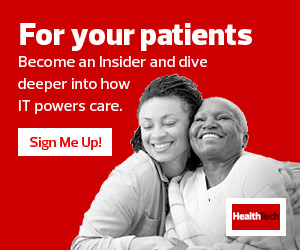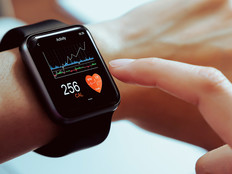Telehealth holds more potential for examining the front of the eye for triaging, compared with the back of the eye when working directly with patients, according to Jeng, because patients generally do not have the ability to image the back of the eye. Doctors can see if eyes are red or if there’s opacity on the cornea, he says. If patients have images taken of the back of their eye at a doctor’s office, then these images can be interpreted by an ophthalmologist.
“We’re able to screen out things that don’t look malignant,” Jeng says. He predicts that telehealth will increase in use as the technology becomes more advanced and less expensive.
Moorfields in London has pioneered the concept of diagnostic imaging hubs, where patients with conditions like AMD, diabetic retinopathy or glaucoma can have tests and scans but not a live consultation with a physician. Doctors review the scans within 24 hours and decide on appropriate steps for the patient. Treatment can include a consultation, further monitoring in the hub or medical treatment.
“The result is a better experience of care for our patients who avoid unnecessary long consultations and increased capacity of the healthcare team to provide the right care to the right patients at the right time,” Balaskas says.
However, scanning equipment must become smaller and more affordable for home use and for doctors to monitor eye scans remotely, he adds.
DISCOVER: How to achieve an end-to-end virtual care solution.
Advances in Optical Coherence Tomography for Eye Care
Optical coherence tomography is a widely used type of ophthalmic imaging that can be thought of as a light-based ultrasound. It lets doctors image tissue at a high-resolution noninvasively. Home-based OCT machines have been undergoing FDA approval and could revolutionize tele-ophthalmology, Liu says.
Although home OCT technologies are promising, they have yet to gain traction due to difficulty in scaling such expensive devices for personal use.
The goal is for every patient to have an inexpensive, compact, miniaturized OCT device at home, according to Balaskas.
“We are not quite there yet from the technology side because it’s still not possible to sufficiently reduce OCT component parts in size and cost,” Balaskas says. He predicts that in the “medium term” they are likely to become more affordable to allow scaling across an entire patient population.
Tracking the Future of Eye Care Technology
The benefit of AI going forward will be in predictive analytics and “oculomics,” according to Balaskas. Oculomics involves the association of ophthalmic biomarkers with systemic health and disease.
AI will help determine which patients may have a positive or negative response to a certain eye treatment and will be able to make predictions based on a patient’s history, images and clinical genetics.
“Multimodal AI will be able to make predictions based on a patient’s history, lifestyle, clinical information, various medical images and scans, and genetics,” Balaskas says. “Lab tests and even remote monitoring sensors will allow ‘the gift of time’ for the all-important patient-clinician interaction.”
Despite the growth of AI, the jobs of eye doctors should be safe because they will be needed to interpret the images, just as a cardiologist is needed to review an EKG, according to Jeng.
“I don’t think we’re ever going to be replaced,” Jeng says. “But do I think that it’s going to make our job easier? Yes. Do I think that it might make it so we’re less reliant on physicians? It certainly might.”
RELATED: Understand key concerns for adoption of medical devices using AI.













